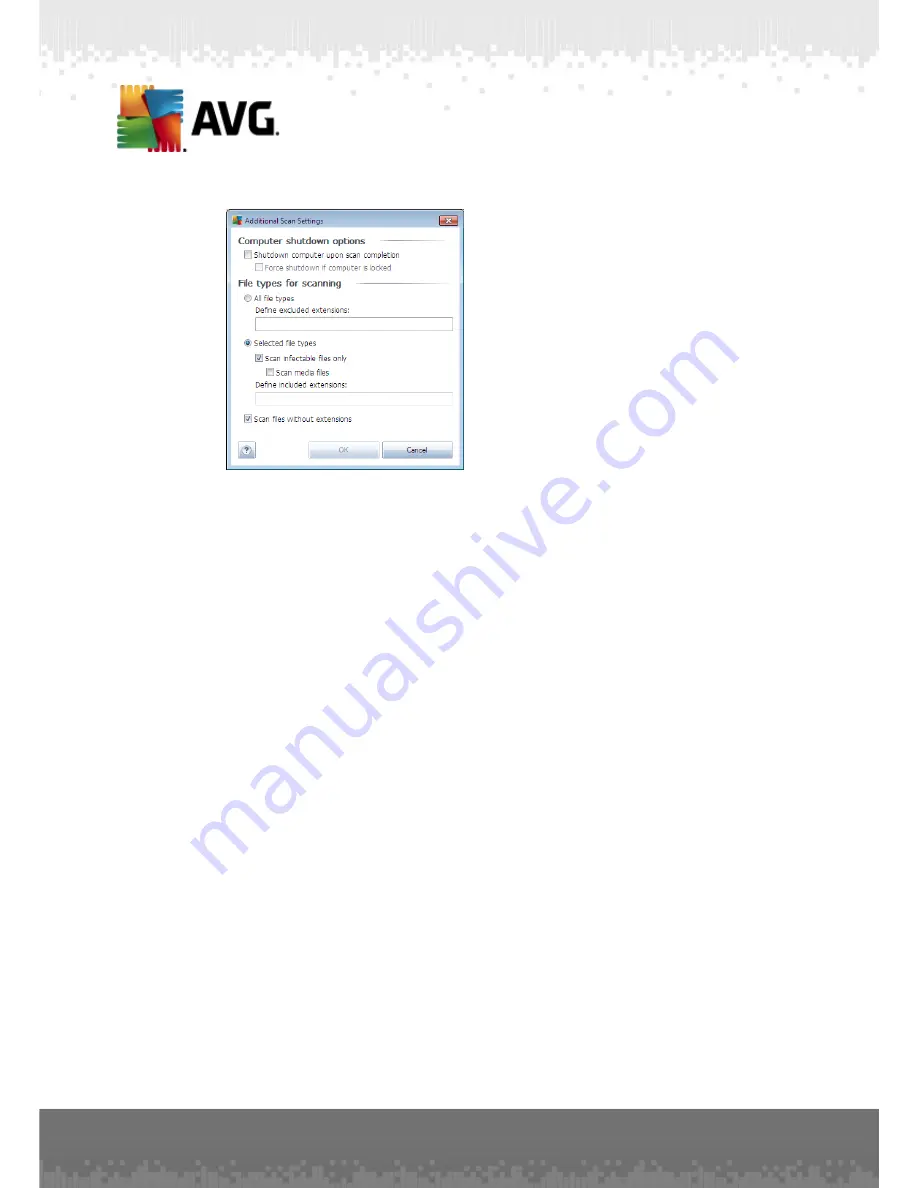
A V G A nti- V irus 2 0 1 1 © 2 0 1 0 C opyright A V G T ec hnologies C Z, s .r.o. A ll rights res erved.
1 8 0
o
Computer shutdown options
- decide whether the computer should be
shut down automatically once the running scanning process is over.
Having confirmed this option (
Shutdown computer upon scan
completion
), a new option activates that allows the computer to shut
down even if it is currently locked (
Force shutdown if computer is
locked
).
o
Define file types for scanning
- further you should decide whether you
want to have scanned:
Ø
All file types
with the possibility of defining exceptions from scanning
by providing a list of comma separated file extensions that should not
be scanned;
Ø
Selected file types
- you can specify that you want to scan only
files that are possibly infectable (
files that cannot get infected will
not be scanned, for instance some plain text files, or some other
non-executable files
), including media files (
video, audio files - if you
leave this box unchecked, it will reduce the scanning time even
more, because these files are often quite large and are not too likely
to be infected by a virus
). Again, you can specify by extensions
which files are those that should always be scanned.
Ø
Optionally, you can decide you want to
Scan files without extension
- this option is on by default, and it is recommended that you keep it
so unless you have a real reason to change it. Files with no extension
are rather suspicious and should be scanned at all times.
·
Scan process priority
- you can use the slider to change the scanning
process priority. By default, the priority is set to medium level (
Automatic scan
) that optimizes the scanning process speed and the use of system resources.
Alternatively, you can run the scanning process slower which means the
system resources load will be minimized (
useful when you need to work on the
computer but you do not care so much how long the scanning takes
), or
faster with increased system resources requirements (
e.g. when the computer















































